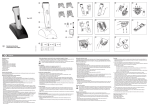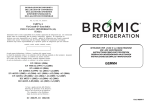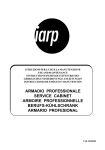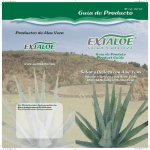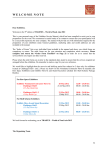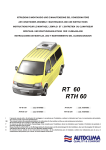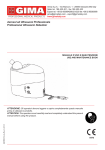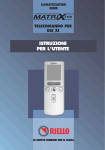Download Delta Series 725-732-735-745-755
Transcript
ISTRUZIONI PER L’USO E LA MANUTENZIONE USE AND MAINTENANCE Delta Series 725-732-735-745-755 Cod. 0007668 La IARP è lieta di annoverarLa fra i suoi Clienti e confida che la qualità di questo prodotto soddisfi pienamente le Sue aspettative. Questo apparecchio è stato progettato accuratamente perchè possa fornire le massime prestazioni nelle migliori condizioni di sicurezza ed economia. Durante le fasi produttive sono stati eseguiti numerosi e severi controlli. Non sono pertanto necessarie cure particolari o interventi di manutenzione da parte di personale specializzato; seguendo i nostri consigli e le istruzioni che troverà all’interno otterrà da questa apparecchiatura la massima resa per lungo tempo. Nel ringraziarLa per la preferenza accordataci voglia gradire i nostri più cordiali saluti. IARP is happy to count you among its customers and confides that the quality of this product completely satisfies your expectations. This machine has been engineered in order to give the maximum performances with the best conditions of reliability and economy. Several strict test were carried out during the productive phases in order to ensure all the above characteristics. It is easy to use and its regular maintenance operations do not require special procedure or the repairings of specialized personnel. Following the instructions given herein you will certainly obtain from this equipment excellent performances for a long time. Once again thank you for choosing an IARP equipment. -2- DELTA 725 909 765 445 905 167 231 DELTA 732 1009 865 545 1005 194 261 DELTA 735 1184 1040 720 1180 242 330 DELTA 745 1388 1244 924 1384 298 402 DELTA 755 1625 1481 1161 1621 362 487 MODEL A B C D Net Vol. Lt. Gross Vol. Lt. -3- INFORMAZIONI PER L'USO AVVERTENZA PER GLI APPARECCHI CHE UTILIZZANO REFRIGERANTE R290 (PROPANO) ITALIANO Il propano è un gas naturale senza effetti sull’ambiente, ma infiammabile. E’ quindi indispensabile accertarsi che tutti i tubi del circuito refrigerante non siano danneggiati, prima di collegare l’apparecchio alla rete di alimentazione. Ogni 8 gr. di refrigerante, il locale d’installazione deve disporre di un volume minimo di 1 m³. La quantità di refrigerante dell’apparecchio è indicata sulla targa dati tecnici posta sullo schienale dell’apparecchio. In caso di perdita di refrigerante, evitare che fiamme libere o fonti di accensione vengano a trovarsi in prossimità del punto di fuga. Fare attenzione a non danneggiare le tubazioni del circuito refrigerante durante il posizionamento, l’installazione e la pulizia. Evitare fuochi o scintille all’interno dell’apparecchio. Attenzione! Non danneggiare il circuito refrigerante. Attenzione! Non danneggiare le pareti interne o esterne dell’apparecchio: il circuito del fluido refrigerante potrebbe danneggiarsi. In caso di pareti danneggiate non avviare l’apparecchio e rivolgersi ad un centro assistenza. Attenzione! In caso di circuito del fluido refrigerante danneggiato non avviare l’apparecchio e rivolgersi ad un centro assistenza. Attenzione! Mantenere libere da ostruzioni le aperture di ventilazione nell’involucro dell’apparecchio o nella struttura a incasso. Attenzione! Non utilizzare apparecchi elettrici all’interno degli scomparti dell’apparecchio per la conservazione dei cibi congelati se questi non sono del tipo raccomandato dal costruttore. Attenzione! Non conservare sostanze esplosive, quali contenitori sotto pressione con propellente infiammabile, in questo apparecchio. INSTALLAZIONE Dopo aver tolto l’imballo procedere ad una pulizia accurata di tutto il banco, utilizzando acqua tiepida e sapone neutro al 5% ed asciugandolo poi con un panno morbido; per le parti in vetro usare unicamente prodotti specifici evitando l’uso di acqua che può depositare sul vetro residui di calcare. La distanza dal muro deve essere almeno di 10 cm. L’apparecchio va sistemato in piano (regolare i piedini), 10 cm lontano da fonti di calore (radiatori, stufe etc.), non esposto ai raggi del sole. Il buon funzionamento dell’ apparecchio può essere compromesso dall’influenza di continui movimenti d’aria (causati ad esempio da ventilatori, bocchette dell’aria condizionata etc.). E’ necessario che il gruppo condensatore sia in condizione di libero scambio d’aria, pertanto le zone di aerazione non devono essere ostruite da scatole o altro. Non sistemare l’apparecchio all’aperto e non esporlo alla pioggia. Installare e posizionare l’apparecchio in modo che la spina di alimentazione sia facilmente accessibile. Non usare apparecchi elettrici nel vano refrigerato. L’apparecchio non è idoneo a sopportare rovesciamenti di liquido sulla sommità dello stesso. Per questo non appoggiare o collocare contenitori di liquidi immediatamente al di sopra del banco frigorifero. L’APPARECCHIO NON E’ IDONEO PER INSTALLAZIONE IN AMBIENTI CON PERICOLO DI INCENDIO O DI ESPLOSIONE O SOTTOPOSTI A RADIAZIONI. Le condizioni ambientali esterne per un regolare funzionamento dell’apparecchio sono specificate sulla targhetta dati tecnici in vasca. -4- MESSA IN SERVIZIO Accertarsi che la tensione indicata sulla targhetta dati tecnici corrisponda a quella di rete. LA LINEA DI ALIMENTAZIONE ELETTRICA A CUI SARA’ ALLACCIATO IL FRIGORIFERO DEVE ESSERE PROTETTA DA INTERRUTTORE DIFFERENZIALE MAGNETOTERMICO AD ALTA SENSIBILITA’ (In=16 A, Id = 30 mA) E COLLEGATO ALL’ IMPIANTO GENERALE DI TERRA. Il fabbricante declina ogni responsabilità per eventuali danni causati a persone o cose derivanti dalla mancata osservanza di questa norma. La messa a terra è necessaria ed obbligatoria per un corretto funzionamento dell’ apparecchio. Per il collegamento non utilizzare assolutamente riduzioni, prolunghe, adattatori o prese multiple. Il collegamento deve avvenire pertanto in maniera DIRETTA alla rete di alimentazione. MANUTENZIONE PERIODICA Qualsiasi intervento effettuato sull’apparecchio da parte dell’utente richiede assolutamente il distacco della spina dalla presa di corrente. Ispezionare periodicamente il cavo di alimentazione. Se il cavo di alimentazione è danneggiato, non utilizzare l’apparecchio e tentarne la riparazione: esso deve essere sostituito dal costruttore o dal suo servizio assistenza o, comunque, da una persona con qualifica similare, in modo da prevenire ogni rischio. Nessuna protezione (griglia o carter) va rimossa da parte di personale non qualificato ed evitare assolutamente di far funzionare l’apparecchio con tali protezioni rimosse. L’eventuale sostituzione delle lampade deve essere eseguita da personale tecnico qualificato. Le lampade devono essere sostituite solo con lampade identiche. Per una buona conservazione delle superfici dell’apparecchio ricorrere a periodica pulizia. MOBILE ESTERNO: Quando è necessario pulire delicatamente il mobile esterno usare un panno morbido imbevuto di soluzione di acqua e detersivo neutro. SUPERFICI IN ACCIAIO INOSSIDABILE: lavare con acqua tiepida e saponi neutri ed asciugare con panno morbido; evitare pagliette o lana di acciaio che possono deteriorare le superfici. SUPERFICI IN MATERIALE PLASTICO: lavare con acqua e saponi neutri, sciacquare ed asciugare con panno morbido; evitare assolutamente l’uso di alcool, acetone e solventi che deteriorano permanentemente le superfici. SUPERFICI IN VETRO: usare unicamente prodotti specifici per il vetro; evitare l’uso di acqua che potrebbe depositare calcare sulla superficie vetrata. PULIZIA VASCA Per le operazioni di pulizia della vasca procedere come segue: 1) Mettere la merce in apposito contenitore refrigerato alla stessa temperatura 2) Spegnere l’apparecchio premendo l’interruttore generale (se presente) e staccare la spina. 3) Lasciare la porta aperta ed aspettare che la temperatura in vasca sia uguale a quella ambiente. 4) Lavare la vasca utilizzando detersivi neutri ed asciugare con un panno morbido. Inserire la spina ed aspettare che l’apparecchio vada in temperatura prima di riempirlo nuovamente. Non usare getti d’acqua nelle operazioni di pulizia: si possono danneggiare le parti elettriche. Non usare dispositivi meccanici o altri mezzi per accelerare il processo di sbrinamento, diversi da quelli raccomandati dal costruttore. UTILIZZO STAGIONALE Se la macchina dovesse rimanere inattiva per lungo tempo occorre effettuare le seguenti operazioni preliminari: - togliere la spina dalla presa di corrente; - pulire bene ed asciugare l’ apparecchio; - lasciare leggermente aperta la porta per evitare la formazione di cattivi odori. - coprire l’apparecchio con un telo, posizionarlo in luogo asciutto e riparato -5- REGOLAZIONE TEMPERATURA E COMANDI Questo apparecchio frigorifero è equipaggiato di un termostato per il mantenimento automatico della temperatura prestabilita ed idonea all’interno della vasca. Il termostato viene tarato presso la fabbrica e non dovrebbe essere toccato dall’utilizzatore. Soltanto nel caso in cui la temperatura media interna risulti non soddisfacente, si può agire ruotarndo la manopola (2) del termostato. I numeri della scala graduata non indicano il valore della temperatura, bensì posizioni di riferimento: a numero maggiore corrisponde una temperatura più fredda . I modelli sono dotati anche di un termostato “no frost” di sicurezza (non regolabile) che elimina il rischio di impaccamento da ghiaccio dell’evaporatore. 2 1) Termostato 2) Termometro 1 INFORMAZIONI PER IL SERVIZIO ASSISTENZA INCONVENIENTI E RIMEDI Gli inconvenienti di funzionamento che si riscontrano negli apparecchi frigoriferi sono dovuti, nella maggioranza dei casi ad installazione elettrica difettosa. Si tratta quindi di cause che possono essere facilmente eliminate sul posto. L’apparecchio non funziona: - controllare che la corrente arrivi regolarmente alla presa; - controllare che la spina sia bene inserita nella presa. La temperatura interna non è sufficientemente bassa: - controllare che l’apparecchio non si trovi vicino ad una fonte di calore; - controllare che non vi sia un eccessivo accumulo di ghiaccio sui ripiani e sulle pareti; - controllare la posizione del termostato; - controllare che il condensatore non sia intasato; - controllare che sul retro dell’apparecchio vi sia spazio sufficiente per il passaggio dell’aria; L’apparecchio è rumoroso: - controllare che tutte le viti ed i bulloni siano ben serrati; - controllare che l’apparecchio sia ben livellato; - controllare che qualche tubo o pala di ventilatore non sia in contatto con altre parti dell’apparecchio. -6- AVVERTENZE PER IL CORRETTO SMALTIMENTO DEL PRODOTTO AI SENSI DELLA DIRETTIVA EUROPEA 2002/96/EC Alla fine della sua vita utile il prodotto non deve essere smaltito insieme ai rifiuti urbani. Può essere consegnato presso gli appositi centri di raccolta differenziata predisposti dalle amministrazioni comunali, oppure presso i rivenditori che forniscono questo servizio. Smaltire separatamente un elettrodomestico consente di evitare possibili conseguenze negative per l’ambiente e per la salute derivanti da un suo smaltimento inadeguato e permette di recuperare i materiali di cui è composto al fine di ottenere un importante risparmio di energia e di risorse.Per rimarcare l’obbligo di smaltire separatamente gli elettrodomestici, sul prodotto è riportato il marchio del contenitore di spazzatura mobile barrato. -7- INFORMATIONS ABOUT USE ENGLISH SAFETY WARNINGS FOR THE APPLIANCES USING R290 COOLING FLUID (PROPANE) Propane is a natural gas that doesn’t affect the environment but is inflammable. It is therefore indispensable to check that the cooling circuit tubing is not damaged before connecting the equipment to the mains. For every 8gr. of cooling fluid, the installation location must have a minimum volume of 1 cubic metre. The amount of cooling fluid in the appliance is indicated on the technical data plate in the tank. Leakage of cooling fluid: avoid naked flames or over sources of ignition at the seat of the leakage. Be careful not to damage the cooling fluid circuit during positioning , installation or cleaning. Avoid flames or sparks inside the equipment. Warning! Do not damage the cooling fluid circuit Warning! Do not damage internal or external walls of the machine: the cooling fluid circuit may damage. In case of damaged walls do not start the machine and refer to a service centre. Warning! In case of damaged cooling fluid circuit, do not start the machine and refer to a service centre. Warning! Keep clear of obstruction all ventilation openings in the appliance enclosure or in the structure for building-in. Warning! Do not use electrical appliances inside the food storage compartments of the appliance, unless they are of the type recommended by the manufacturer. Warning! Do not store explosive substences such as aerosol cans with flammable propellant in this aplliance. INSTALLATION Take out packing and clean all the cabinet using warm water together with 5% of neutral soap then dry it with a soft-cloth; for the glass parts only use specific products, avoiding the use of water which can leave on the glasses limestone residues. Keep a distance from the wall of 10 cm at least. Cabinet must be installed on a perfectly even surface (please level the unit settling the adjustable feet) far away from any heat source (radiators, stoves, etc) including sun rays. 10 cm Good running of the cabinet can be compromised in cases where the airflow is disturbed (wind, ventilators, air conditioning outlets, etc). Smooth running of the cabinet is assisted when sufficient air is permitted to flow through the bottom of the unit; it is very important that the grills at the base are kept uncovered. Do not expose the cabinet to rain. Install and position the unit in such a way so as to allow easy access to the power socket. Never use electrical equipment in the refrigerated compartment. Never place containers of liquid on or immediately above the ticket counter; should the content spill out, it would damage the counter. THE REFRIGERATOR IS NOT SUITABLE FOR WORKING IN DANGEROUS ENVIRONMENT WITH RISK OF FIRE, EXPLOSIONS AND RADIATIONS. Operation is regular with ambient temperature indicated on technical data plate, placed inside the tank. -8- PUTTING INTO OPERATION Check that the voltage on the identification plate is the same as that of the network. THE ELECTRICAL SUPPLY LINE TO WHICH THE REFRIGERATOR WILL HAVE TO BE CONNECTED IS TO BE PROTECTED BY A VERY SENSITIVE DIFFERENTIAL SWITCH (Rc=16A,Dc=30mA); IT IS ALSO TO BE LINKED TO THE GENERAL EARTHING PLANT. The manufacturer disclaims all responsability for any damage to people or things due to incorrect observance of this rule. Earthing is necessary and compulsory by law. Absolutely never use reduction units, patch cords, adapters or multiple socket outlets to connect the counter. DIRECTLY connect the equipment to the mains. PERIODICAL MAINTENANCE Any further adjustments on the refrigerator necessarily require the electric plug to be removed. Check periodically the supply cable in order to detect any damage. If the power supply cable is damaged, don’t use the equipment and don’t try to repair it: to prevent any risk, it must be replaced by the manufacturer, by a member of the after-sales service staff, or anyway by a person having similar qualifications. In any case, none of the protective elements (the grill, the carter) must be removed by non qualified staff. Absolutely avoid using the refrigerator without such protection. For a good preservation of the cabinet’s body a periodical cleaning is necessary. EXTERNAL BODY: When necessary, the external body should be cleaned with a cloth and a neutral soap and water solution. STAINLESS STEEL SURFACES: wash with warm water and mild detergent, rinse well and dry with soft cloth. Avoid scouring pads etc. which will spoil the finish of the stainless steel. SURFACES IN PLASTIC MATERIAL: wash with warm water and mild detergent, rinse well and dry with soft cloth; under no circumstances should alcohol, methylated spirits or solvents be used. GLASS SURFACES: only use products specifically designed for glass cleaning; It is not advisable to use ordinary water which can leave a film of calcium on the surface of the glass. DEFROSTING AND TANK WASHING Proceed as follows: 1) Place the goods in special refrigerated containers, kept at the same temperature. 2) Switch off the unit by pushing on main switch (if present) and unplug the unit directly. 3) Leave the glass door open and begin the operation of tank washing when the tank temperature is equal to the ambient temperature. 4) Wash and dry the tank using neutral soap and soft cloth. Plug in again and wait till the appliance reaches the right temperature before filling it again. Do not use jet of water to clean the cabinet: electrical wiring can have damages. Never use mechanical devices or any other means to accelerate the defrosting process, other than those recommended by the manufacturer. SEASONAL USE When the unit is kept unused for a long time, please take note of the following procedures: - unplug the unit; - clean and dry well the tank; - leave the glass door open to avoid possible formation of bad smells; - cover the unit with a curtain, place it in a dry room and sheltered from the atmospheric agents. -9- TEMPERATURE SETTING AND CONTROLS Each refrigerating appliance is provided with a thermostat for automatic maintenance of the appropriate pre-established temperature inside the tank. This temperature adjuster is gauged by the factory and should not be touched by the user. Only if the average internal temperature is too cold or not cold enough should the knob (2) turned. The numbers on the regulation plate are not related to temperature values but only to knob reference position: higher number corresponds to a lower temperature. 2 1) Thermostat 2) Thermometer 1 INFORMATIONS ABOUT SERVICE MALFUNCTIONS AND REMEDIES Most of the functioning inconveniences are generally due to defective electrical connections. These problems can usually be solved on the place. The unit does not start: - check that there is voltage at the wall socket; - check that the unit is properly plugged. The internal temperature is not cold enough: - check that the unit is not placed too close to any heating source; - check that there is not too much ice on the refrigerating shelves; - check the thermostat position; - check that the condenser is not blocked by dirt; - check that behind the cabinet air can properly circulate; The unit is noisy: - check that all the bolts and nuts are properly fasten; - check that the unit is placed on an even surface; - check if any pipe or fan is in contact with any other part of the body. -10- IMPORTANT INFORMATION FOR CORRECT DISPOSAL OF THE PRODUCT IN ACCORDANCE WITH EC DIRECTIVE 2002/96/EC At the end of its working life, the product must not be disposed of as urban waste. It must be taken to a special local authority differentiated waste collection centre or to a dealer providing this service. Disposing of a household appliance separately avoids possible negative consequences for the environment and health deriving from inappropriate disposal and enables the constituent materials to be recovered to obtain significant savings in energy and resources. As a reminder of the need to dispose of household appliances separately, the product is marked with a crossed-out wheeled dustbin. -11- DICHIARAZIONE DI CONFORMITA' DECLARATION OF CONFORMITY Noi, we : IARP S.r.l. Via Grandi 43 - Zona Ind.le 15033 CASALE MONFERRATO (AL) ITALIA www.iarp.it IARP ASIA Co., Ltd. 231 Moo, Petchkasem Rd, Tambon Kao - Yai, Amphoe CHA-AM - PETCHBURI 76120, THAILAND www.iarpasia.com dichiariamo sotto la nostra responsabilità che il prodotto: apparecchio di refrigerazione per uso commerciale declare under our responsability that the product: refrigeration appliance for commercial use modello, model: al quale questa dichiarazione si riferisce, è conforme alle seguenti norme: to which this declaration relates is in conformity with the following standards or other normative document: CISP 14-1..................................................................................... Ed.2005 CISP 14-2..................................................................................... Ed.1997 IEC 61000-3-2.............................................................................. Ed.2005 IEC 61000-3-3.............................................................................. Ed.2008 IEC 60335-1................................................................................. Ed.2010 IEC 60335-2-89............................................................................ Ed.2010 In base a quanto previsto dalle Direttive: Following the provisions of the Directives: EC 2006/95, EC 2004/108 -12-












